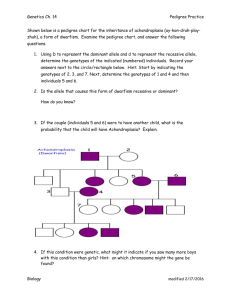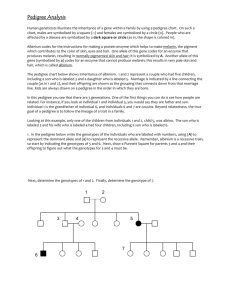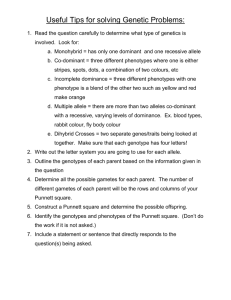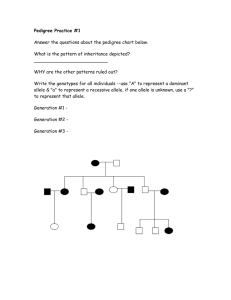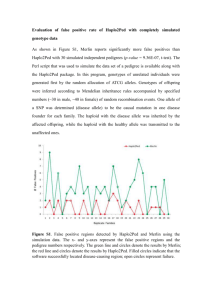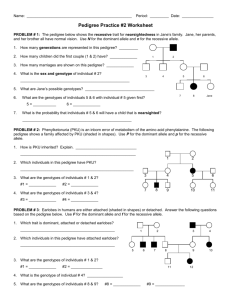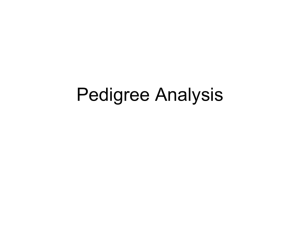Pedigree Analysis
advertisement
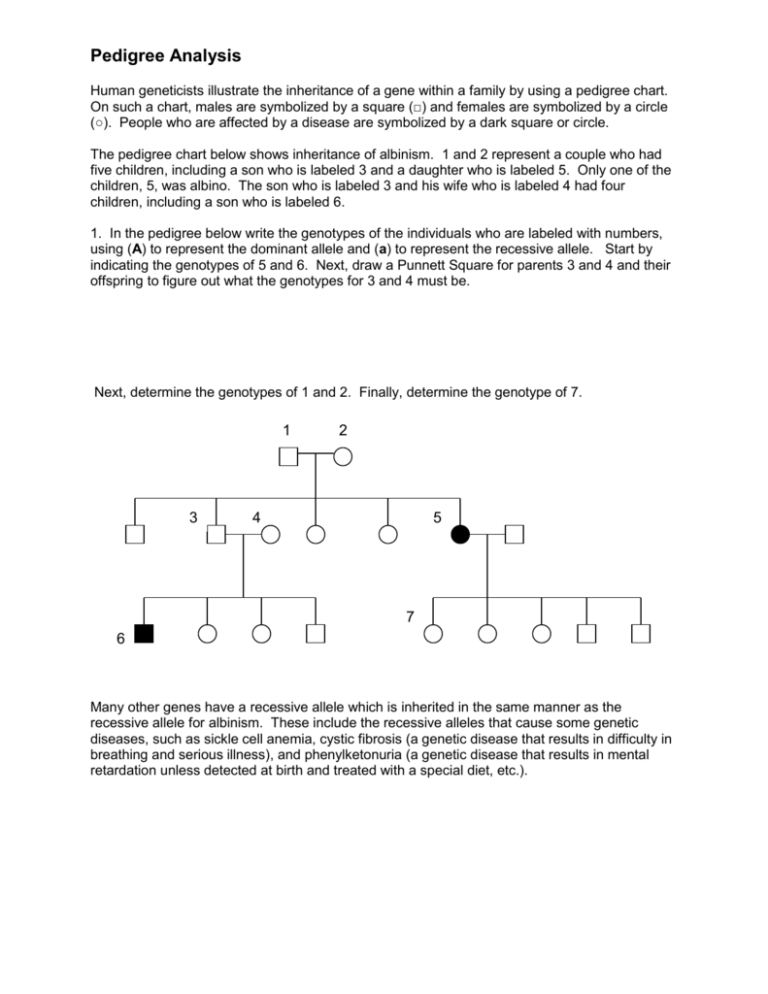
Pedigree Analysis Human geneticists illustrate the inheritance of a gene within a family by using a pedigree chart. On such a chart, males are symbolized by a square (□) and females are symbolized by a circle (○). People who are affected by a disease are symbolized by a dark square or circle. The pedigree chart below shows inheritance of albinism. 1 and 2 represent a couple who had five children, including a son who is labeled 3 and a daughter who is labeled 5. Only one of the children, 5, was albino. The son who is labeled 3 and his wife who is labeled 4 had four children, including a son who is labeled 6. 1. In the pedigree below write the genotypes of the individuals who are labeled with numbers, using (A) to represent the dominant allele and (a) to represent the recessive allele. Start by indicating the genotypes of 5 and 6. Next, draw a Punnett Square for parents 3 and 4 and their offspring to figure out what the genotypes for 3 and 4 must be. Next, determine the genotypes of 1 and 2. Finally, determine the genotype of 7. 1 3 2 4 5 7 6 Many other genes have a recessive allele which is inherited in the same manner as the recessive allele for albinism. These include the recessive alleles that cause some genetic diseases, such as sickle cell anemia, cystic fibrosis (a genetic disease that results in difficulty in breathing and serious illness), and phenylketonuria (a genetic disease that results in mental retardation unless detected at birth and treated with a special diet, etc.). Challenge Question Shown below is a pedigree chart for the inheritance of achondroplasia (ay-kon-druh-play-zhuh), a form of dwarfism. Dark circles or squares indicate individuals with achondroplasia. Examine the pedigree chart, and answer the following questions. 1. Is the allele that causes this form of dwarfism recessive or dominant? How do you know? 2. Using D to represent the dominant allele and d to represent the recessive allele, write the genotypes of the indicated individuals. Start by indicating the genotypes of 2, 3 and 7. Next, draw a Punnett Square for parents 5 and 6 and their offspring to figure out what the genotypes for 5 and 6 must be. Next, determine the genotypes of 1 and 4. 1 3 2 4 5 6 7 3. Based on the frequency of dwarfs among the people you have seen in your lifetime, do you think that the allele for achondroplasia is common or rare in the population?
